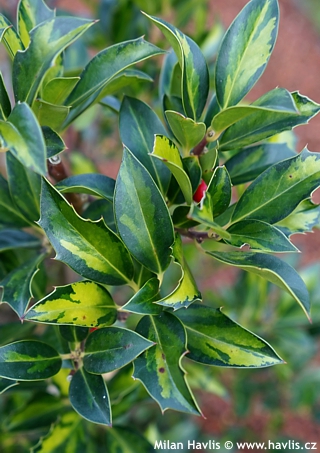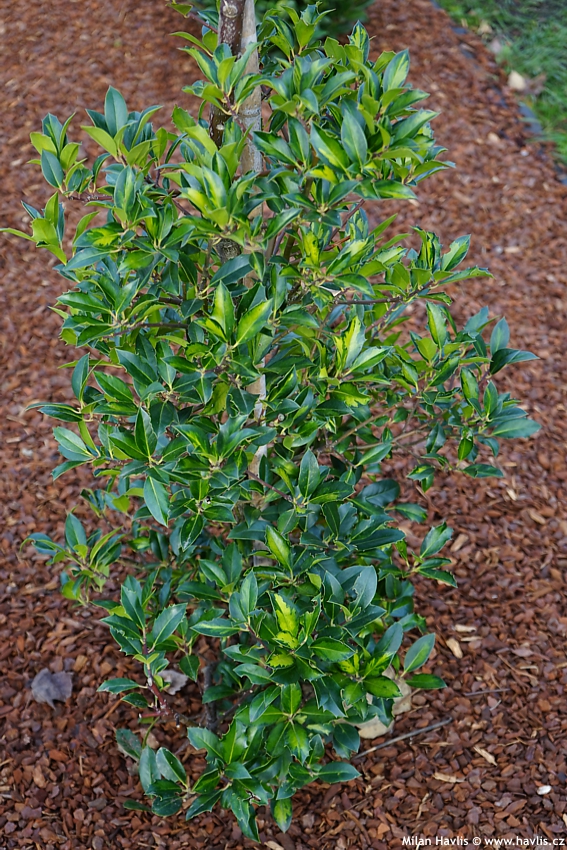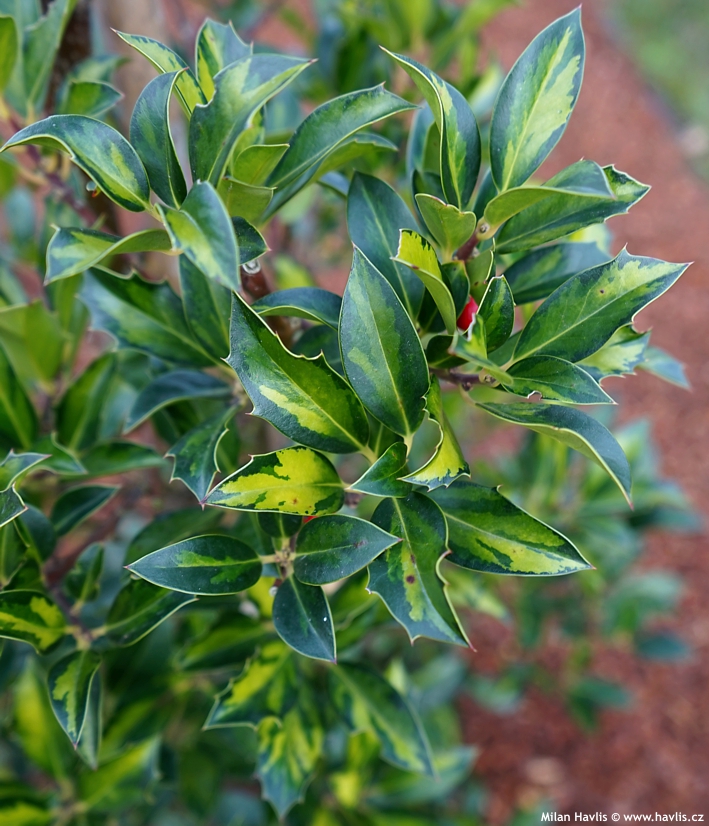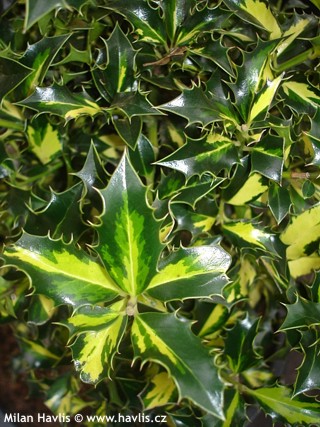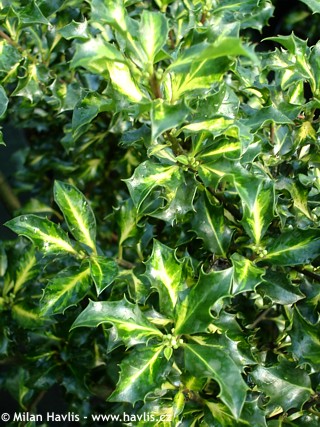Ilex aquifolium 'COMTESSE' English holly - female
Ilex
English hollies are among the most common evergreen and native plants of milder parts of Europe with high humidity – British Isles, north France, Benelux countries, and milder parts of north Germany. Various species form trees, shrubs, or thickets. They are absent from natural Central European landscape but can be cultivated without problems. They are renowned for glossy, often prickly leaves, and multiple variegated forms have been selected for garden cultivation.
Comtesse is a rare variety of female English holly. It is sought-after by collectors for its unique and elegant foliage. Its evergreen leaves are dark green with irregular marbling of yellow-green, chartreuse, and medium green colour in the centre. They are partially glossy, and the margins may produce a few spines or be completely spineless (entire). Being a female plant, it produces small red berries in autumn if pollinated by a male plant growing nearby. They are not edible nor poisonous but contain saponins which cause severe discomfort if eaten.
It grows rather slowly – 5-10 cm per year into a slender, upright habit. The stems are deep burgundy red. If branches with only green (reversed) foliage appear they must be removed as soon as possible since these are more vigorous, and within a few years might take over leaving only a few variegated leaves at the bottom.
Grow hollies in moist but well-drained, fertile soil. They can take periods of drought once established but dislike compacted, heavy-clay-based soils that turn very dry in summer, and often too wet in winter. If your soil is such, dig the planting hole only half the depth of the root ball, refine what you dig out and mix well with quality substrate of highly acidic level (low pH value). Using this mixture make a gradual slope from the stem to the original ground level and tamp it down as much as you can. Your root ball should not look like a molehill but more like a wide and flat mound. Mulch it well and keep watering it more often as it will be more prone to drying out as opposed to most common flat-in-the-ground transplanting. Hollies do best in full sun but can also grow in shade where they will lose their compact habit. Before and during winter when the soil is not frozen provide good watering. Hardy to about -27°C (USDA zone 5b).
Last update 28-12-2020

































